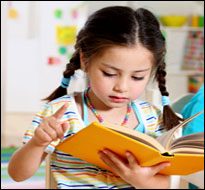
Studies have shown that early childhood education can impact a student’s academic trajectory and professional successes. Early education is particularly critical in helping students of lower-income families excel in traditional school settings. While researchers have tracked the performance of individual students in early childhood educational settings, less is known about the setting itself and the impact disruptive, aggressive or disengaged students may exert on their peers and on classroom pedagogy.
A 2012 study from Columbia University and the educational R&D company Mathematic published by American Behavioral Scientist, “Links Between Young Children’s Behavior and Achievement: The Role of Social Class and Classroom Composition,” examined the associations between inattention, aggressive behavior and achievement at the individual and classroom levels. The study used ECLS-K survey data on math and reading achievement from more than 14,500 kindergarten students and 2,000 classrooms in the 1998-1999 academic year to investigate differences between four groups — kindergarteners showing low attention or high aggression, both low attention and high aggression, or no behavioral issues — on math and reading assessments.
The study’s findings include:
- Students with one or more behavior problems consistently tested lower than their peers, but those showing aggressive behaviors tested only 2 percentage points lower in math and 3 percentage points in reading than the control group while students with both behavioral problems or attention problems scored 7 to 8 percentage points lower in math and 6 to 7 percentage points lower in reading.
- A classroom with a higher percentage of students with low attention issues was negatively associated with overall achievement gains.
- A classroom with a higher percentage of aggressive students, however, did not affect overall test scores significantly. The researchers speculated that the limited rigor and focus on computational tasks of kindergarten may help minimize the effects of aggressive disruptions on instruction.
- Test scores for children with behavioral problems were not affected by gender, low socioeconomic or minority status; lower-income students made up a larger percentage of the group of students with both behavioral issues.
- Black and Latino students were overrepresented in the attention problem group, while Asian students were overrepresented in the group showing no classroom behavioral issues.
The authors noted that teachers’ evaluations of a student’s behavior may reflect instructor biases, and cautioned that that academic and behavioral problems in kindergarten may set the stage for progressive failures. “Even though aggressive behavior among other children had minimal relation to gains in schools at the kindergarten level, in later grades being in classrooms with aggressive and disruptive children could have negative influences on test scores.”
Tags: African-American, Latino, Hispanic, race, children
The Role of Social Class and Classroom Composition," American Behavioral Scientist, July 2012, Vol. 56, No. 7, 961-990. doi: 10.1
